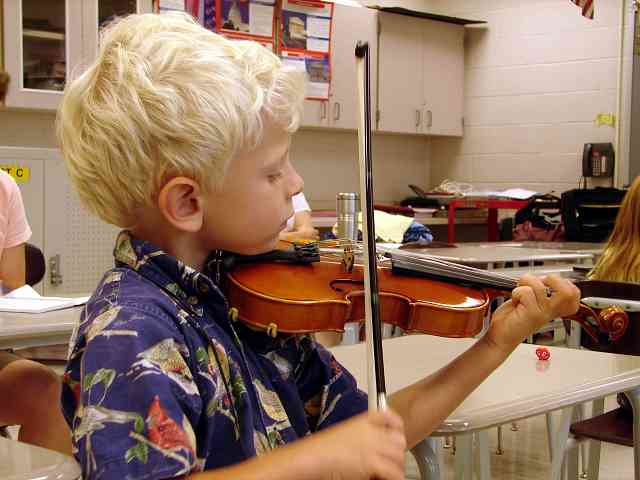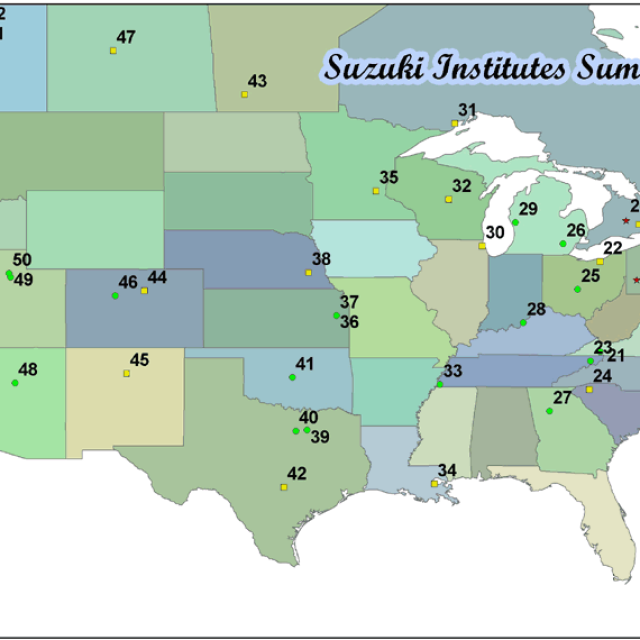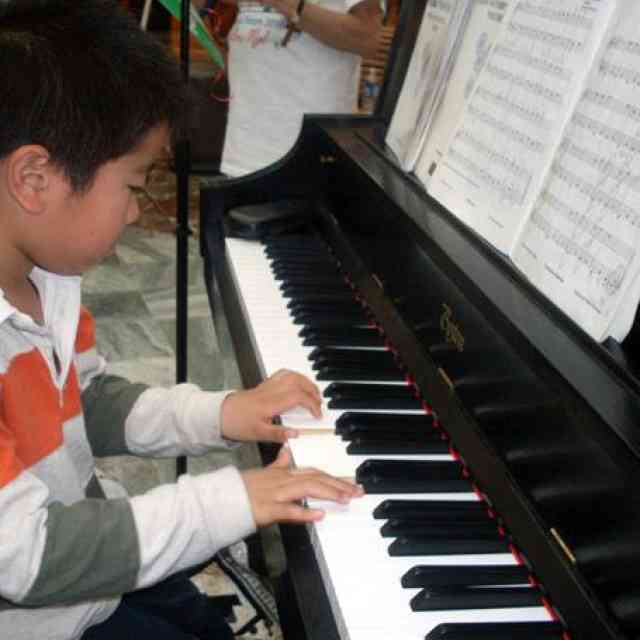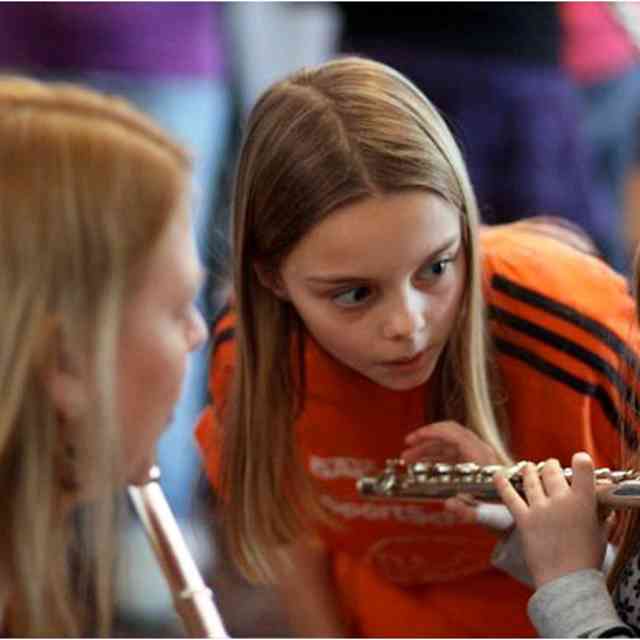
Violin student at Greater Pittsburgh Suzuki Institute
Most of us have had the experience of our older children and students referring to the earliest Suzuki pieces as “baby songs.” They consider themselves too grown up to play or review these pieces. When I hear this phrase or sense this attitude, I ask these older-and-wiser children to examine their language. I help them discover that what they are really saying is that they think of these songs as “baby songs” because the “babies” can play them and because they themselves played them when they were three or four years old. True enough. Then I ask them if doing something that a baby can do automatically makes them a baby. With some thinking about walking, talking, breathing, eating, etc., these older students start to think a bit differently: yes, I do many of the same things a baby does but I do them in a more advanced and grown up way. So far, so good.
Next I ask them what they mean by “baby” is something like, “a human being that isn’t very old,” or “a person that hasn’t been around very long.” Of course. So that means that Go Tell Aunt Rhody is not really a “baby song” for you because it’s been around for several years. It’s really pretty grown up. Your “baby song” is the Bach Double—your newest piece! Right? This is totally backwards from their original thinking. They had been thinking of the Bach Double as a grown up piece because they have to be pretty grown up to begin learning it. However, there is no arguing with the logic that even though you have to be grown up to study the Bach Double, when you first begin working on it, the piece itself is a “baby.”
We talk about the characteristics of their newest piece. It stumbles. It can’t stand on its own vet. You wouldn’t take it out in public until it’s a bit older. It is very vulnerable. It is not fully developed. You can’t count on it yet. It can’t express much. It can’t wear very interesting clothes, hairstyles, accessories, make-up or tattoos yet because it’s still forming the basic skin, bones and muscle. These are all characteristics of babies. On the other hand, old pieces all have characteristics of being grown up. They are dependable. They are strong. They can’t be easily shaken. They are safe out in public. They can express mature sound, phrasing and emotion. They can wear different clothes and can speak differently in different situations. They can be accessorized! They are capable of musical interest and unique personality. They are not just correct bodies. Children love to be logical and once this “adjective error” is pointed out to them, they begin correcting their parents’ language—and sometimes mine!—with great glee.
As soon as you help your students separate the adjectives “baby” and “grown-up” as applied to the pieces from the same adjectives as applied to the player, they understand. Sorting out language is fun and can have a fundamental effect. Students may start to approach their “oldest” pieces with the proper reverence for “older” things as they themselves get older. When the students are convinced about the logical and proper way to use the term “baby songs,” I tell them to look forward to the “baby songs” in their future—the concertos of Mozart, Mendelssohn, Bruch and Beethoven!









